20 years of Indian Ocean tsunami: The aftermath of the deadliest disaster in modern history, in photos
On December 26 2004, a powerful earthquake, measuring 9.1, struck off the western coast of Indonesia. The undersea quake unleashed a colossal wave that wreaked havoc across countries of Asia, including India, Indonesia, Sri Lanka, and Thailand. One of the world’s worst natural disasters, the tsunami left an estimated 227,898 people killed or missing in 14 countries
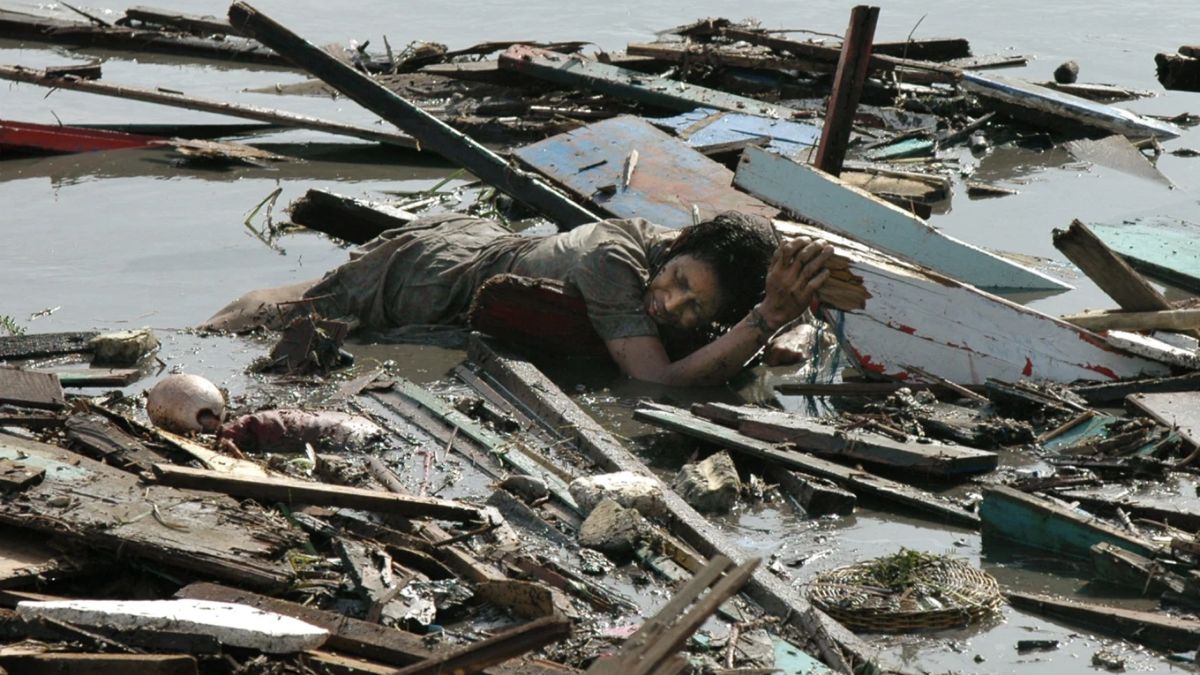)
On 26th December 2004, a powerful earthquake, measuring 9.1, struck off the western coast of Sumatra, Indonesia. The sheer force of this undersea quake unleashed a colossal wave that surged across thousands of kilometres, wreaking havoc on coastal communities throughout Asia. Some 2,30,000 people died in the disaster. AFP
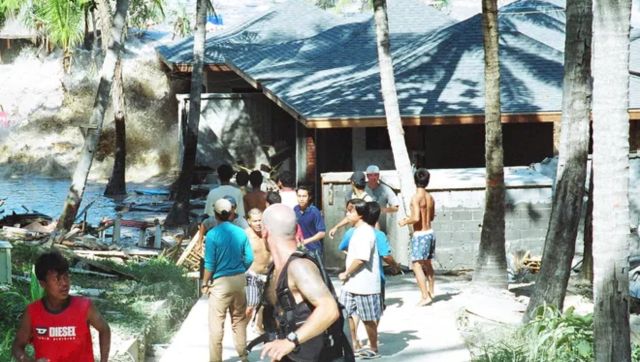)
As the tsunami levelled remote villages, ports and tourist resorts in Indonesia, Thailand, India and Sri Lanka, among other countries, it unleashed a trail of devastation. This photo shows people fleeing as a tsunami wave comes crashing ashore at Koh Raya, part of Thailand’s territory in the Andaman Islands. AFP
)
Marina Beach in Chennai presented a grim scene of devastation after the powerful tidal waves battered the southern Indian coastline. The disaster struck just after dawn, sending tsunamis crashing westwards and sweeping men, women, and children out to sea. According to the home minister, the death toll had already reached 1,000, with warnings that the numbers were expected to rise. AFP
)
Kusol Wetchakul offers prayers for the soul of his sister Wednesday, Dec. 29, 2004, at dawn along the beach near Khao Lak, Thailand. Wetchakul’s sister was swept out to sea and believed drowned as she sold goods to tourists on the popular tourist beach just north of Phuket. AP
)
Sri Lanka was among the worst-hit countries. The aerial view from Dec 29, 2004 revealed the heart-wrenching aftermath in Kalmunai, Sri Lanka, where survivors stood amidst the wreckage of homes, fishing boats, and holiday resorts destroyed by tsunami waves. The disaster claimed the lives of at least 18,000 people, including 100 foreign nationals, devastating over three-quarters of the island’s coastline, according to government officials. AFP
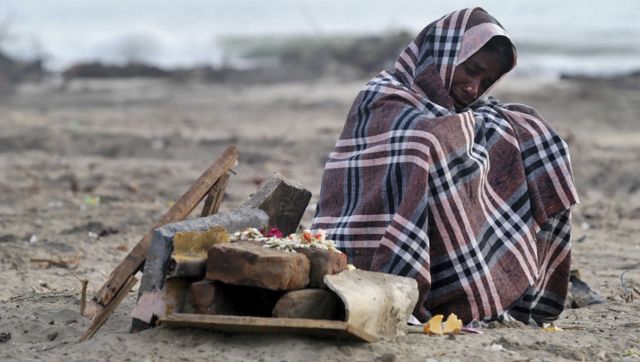)
Rani Amma, 50, grieves for her family who died in the tsunami, as she sits near a small temple she made at the spot where her home once stood, at Nagappattinam, in the southern Indian state of Tamil Nadu, Wednesday, Jan. 12, 2005. Amma lost seven family members which include four granddaughters, one son, one daughter and one son-in-law. AP
)
The massive wave also hit a crowded passenger train (No 50, Matara Express) in Sri Lanka. The impact was so huge, that the train was derailed by the force of water rushing in from the sea, claiming the lives of at least 1,700 people. This was one of the deadliest recorded train disasters in history.
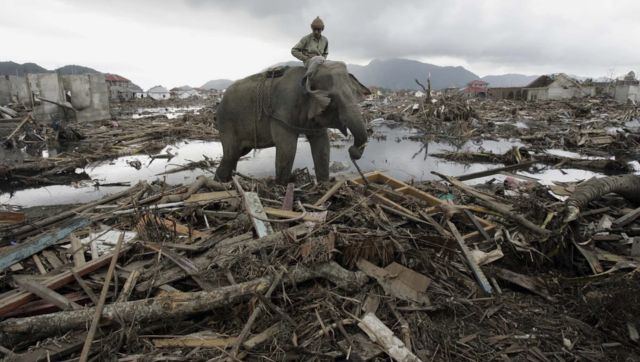)
The tsunami also left an estimated 10 million cubic meters (13 million cubic yards) of debris. If all that was squeezed into a 1-hectare field, it would create a 3,000-foot-tall tower of trash. Cleaning up the wrecked infrastructure was a mammoth and overwhelming, task. The picture shows an elephant which belongs to the forest ministry removing debris on Monday, Jan. 10, 2005, in Banda Aceh, Indonesia. AFP
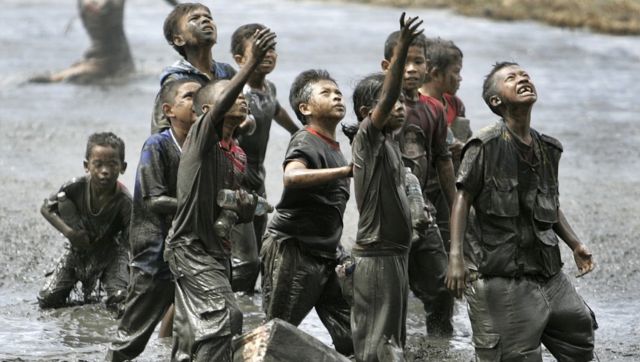)
Refugee children try to catch relief goods tossed from an Australian military helicopter in a rice paddy in Lampaya, outskirts of Banda Aceh, Indonesia, Jan. 17, 2005. AP
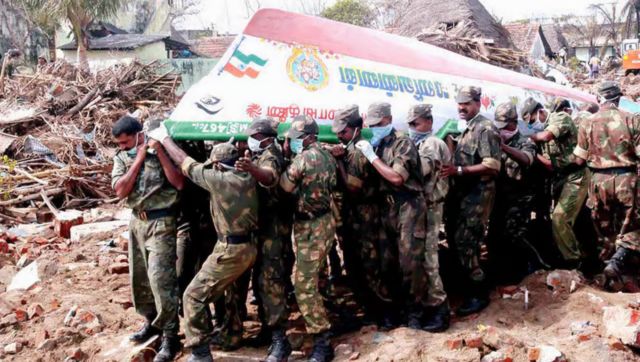)
The Indian army personnel shifted a boat which was swept to a residential area of a tsunami-hit village, in Nagapattinam district, Tamil Nadu. PTI
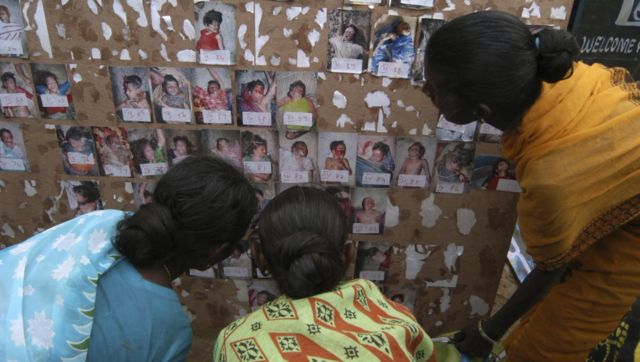)
People who lost family members to the deadly tsunami, try to identify them from photos taken before their mass burial and later posted on boards to help families identify their dead, at Vailankanni, near Nagapattinam, India, Saturday, Jan. 8, 2005. An estimated 227,898 people were killed or declared missing across 14 countries in the tsunami. AP


)
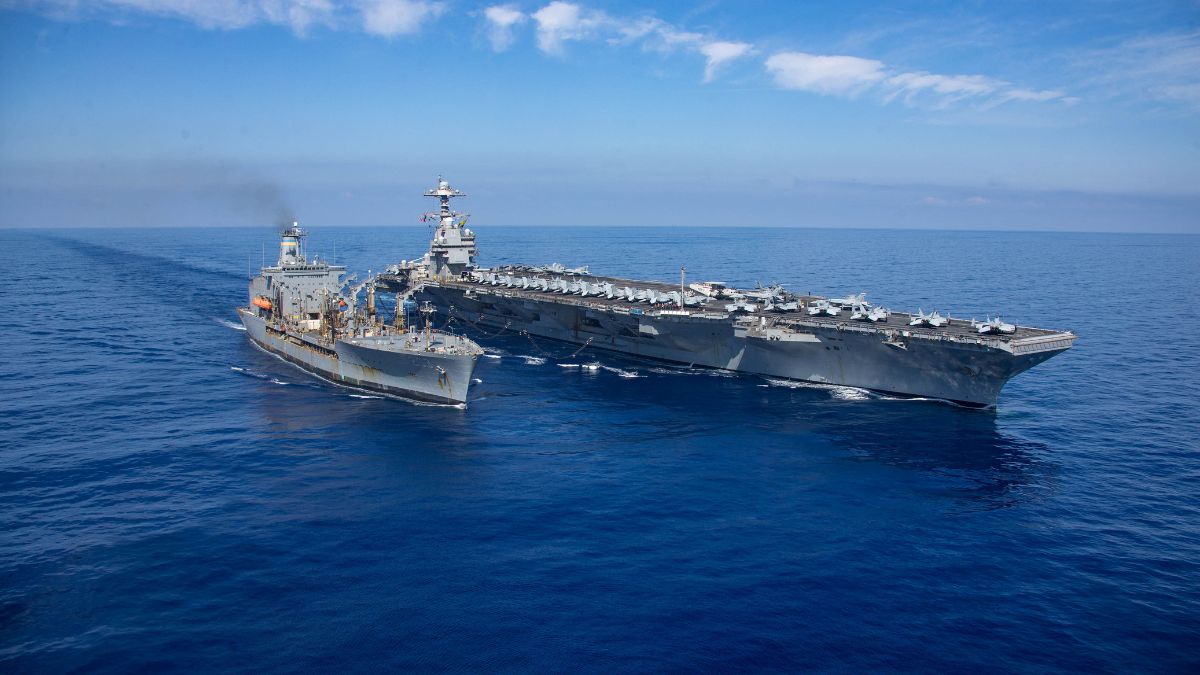)
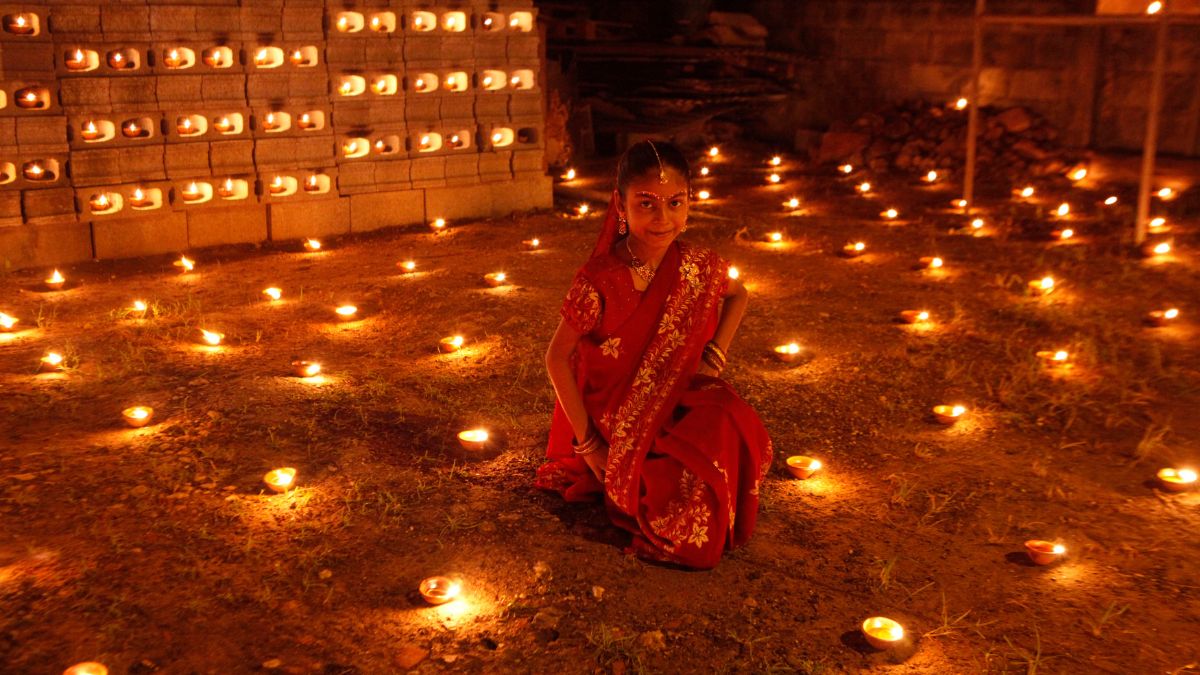)
)
)
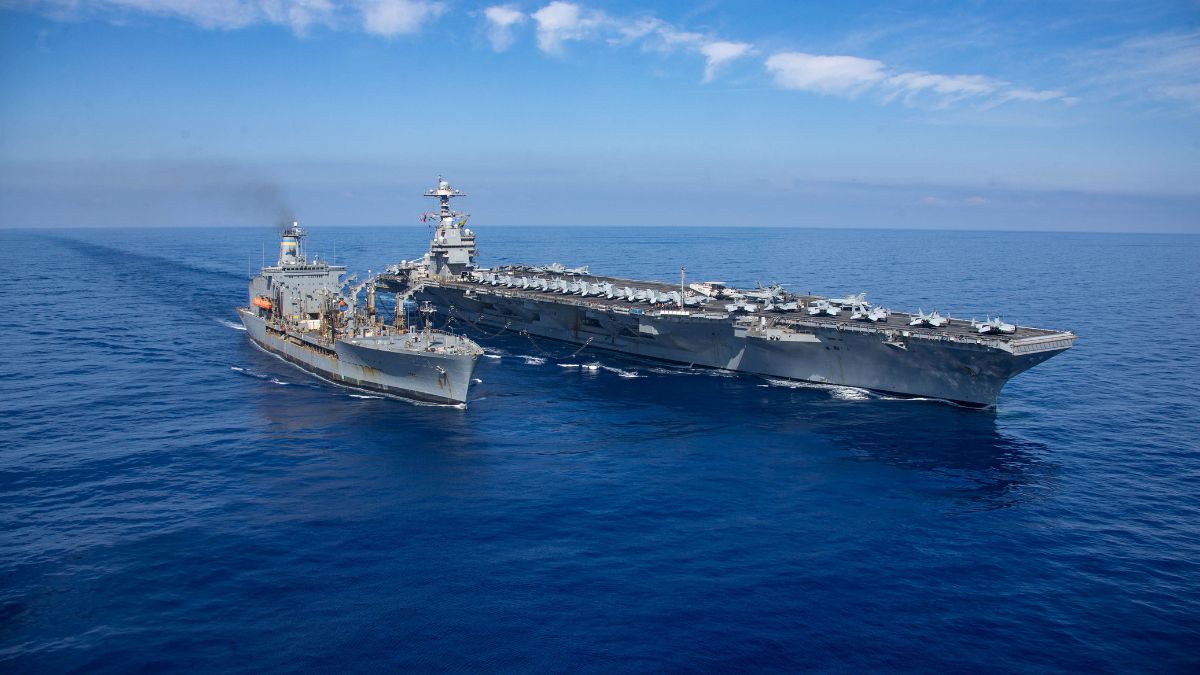)
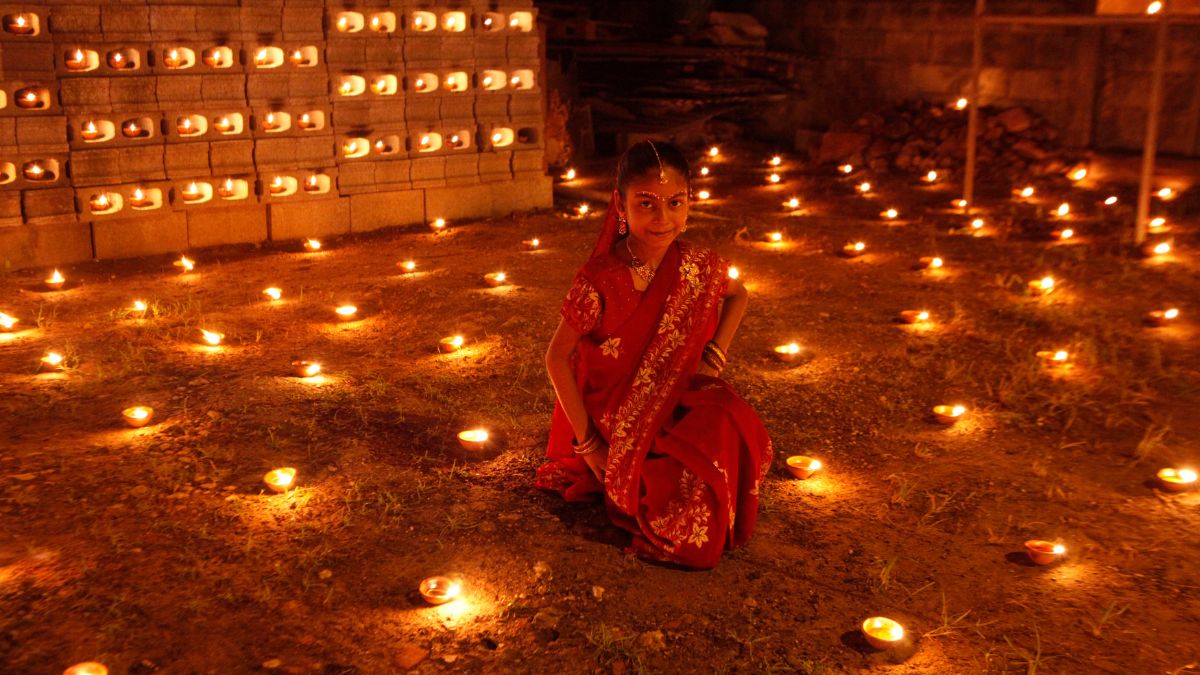)
)



